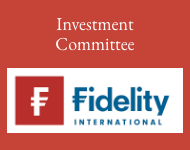Index trackers took in a record £28 billion in 2024, up £9.6 billion on the previous record set in 2020, data from the Investment Association(AI) has revealed.
Index tracking funds now account for a quarter of UK investor funds under management, up from 18% in 2020.
Inflows were boosted by sales of £20.6 billion to funds tracking equity indexes, up from £8.7 billion the previous year, as investors returned to equities amid falling inflation and central banks embarking on a rate-cutting cycle.
The Investment Association said sales to Global and North American index trackers were strong as investors sought exposure to the large technology stocks that have propelled the performance of US and Global indices forward. Global trackers took the largest share at £10.2 billion, up from £4.3 billion in 2023, followed by North American trackers, which saw inflows of £3.8 billion, an increase from £3 billion in 2023.
Overall, funds under management ended 2024 at £1,509 billion, an increase of 6% since the end of 2023. However, the year also saw net retail outflows of £1.6 billion.
Equity funds continued to see overall outflows through 2024, although at £5.7 billion outflows were significantly reduced from the £22.4 billion outflow recorded in 2023. The data found overall outflows were driven by active equity funds. The Investment Association said UK equity funds outflows weighed on equity net sales with £13.1 billion in outflows during the year.
In contrast, fixed income funds had a positive year with inflows of £3.2 billion, up from £720 million in 2023. Investors increasingly opted for corporate bond funds in 2024, with net inflows of £4.6 billion following flat sales in 2023.
Laith Khalaf, head of investment analysis at AJ Bell, said: “Index trackers absolutely smashed through previous records in 2024, taking in £28 billion from retail investors. What’s particularly impressive is this was done against a backdrop of weak overall fund inflows.
“If there’s not much lunch to go around, but you’re still gobbling up money like tracker funds are, that means you’re eating someone else’s. The result? Active funds saw £29 billion of outflows in 2024. That wasn’t a record because in 2023 active funds saw £38 billion of retail outflows, as they did in 2022. So, over the last three years active funds have waved goodbye £105 billion of retail assets.”
Khalaf said one of the key reasons money is flowing into passive funds is performance. According to AJ Bell’s analysis, only a third of active funds have outperformed a passive alternative over 10 years as a result of the exceptional returns generated by the Magnificent Seven and the fact most active managers in the Global and US sectors are underweight compared to the index and their passive competitors.
Khalaf said cost and simplicity are also key factors in the shift towards passive investing.
“There are many more investors today than there were in the heyday of the star manager, but a smaller proportion of hobbyists. Many of them just want to park their money in a fund that offers them cheap and cheerful exposure to the stock market,” he explained.
Looking ahead to this year, Miranda Seath, director of market insight and fund sectors at the Investment Association, described the outlook for UK equities as “relatively good.”
She said: “UK stocks are seen as good value, the UK political agenda is clear and the pro-growth agenda set by the Government is a positive statement of intent. While there may be significant opportunities for investors in 2025, the febrile global geo-political environment could introduce more volatility. Tariffs would be detrimental for both global trade and may introduce investor caution over sectors, such as emerging market equities.”
Seath added: “Whilst returns may be choppier across equity markets around the world, it could bring some interesting opportunities for investment managers to drive performance. With such distinct short and long-term structural changes witnessed across global markets in recent months, what will remain true in 2025 is that markets won’t stand still. The key message therefore to investors is to stay invested through periods of volatility and to think long-term.”
Main image: edouard-dognin-H6PaJwYMfUU-unsplash































